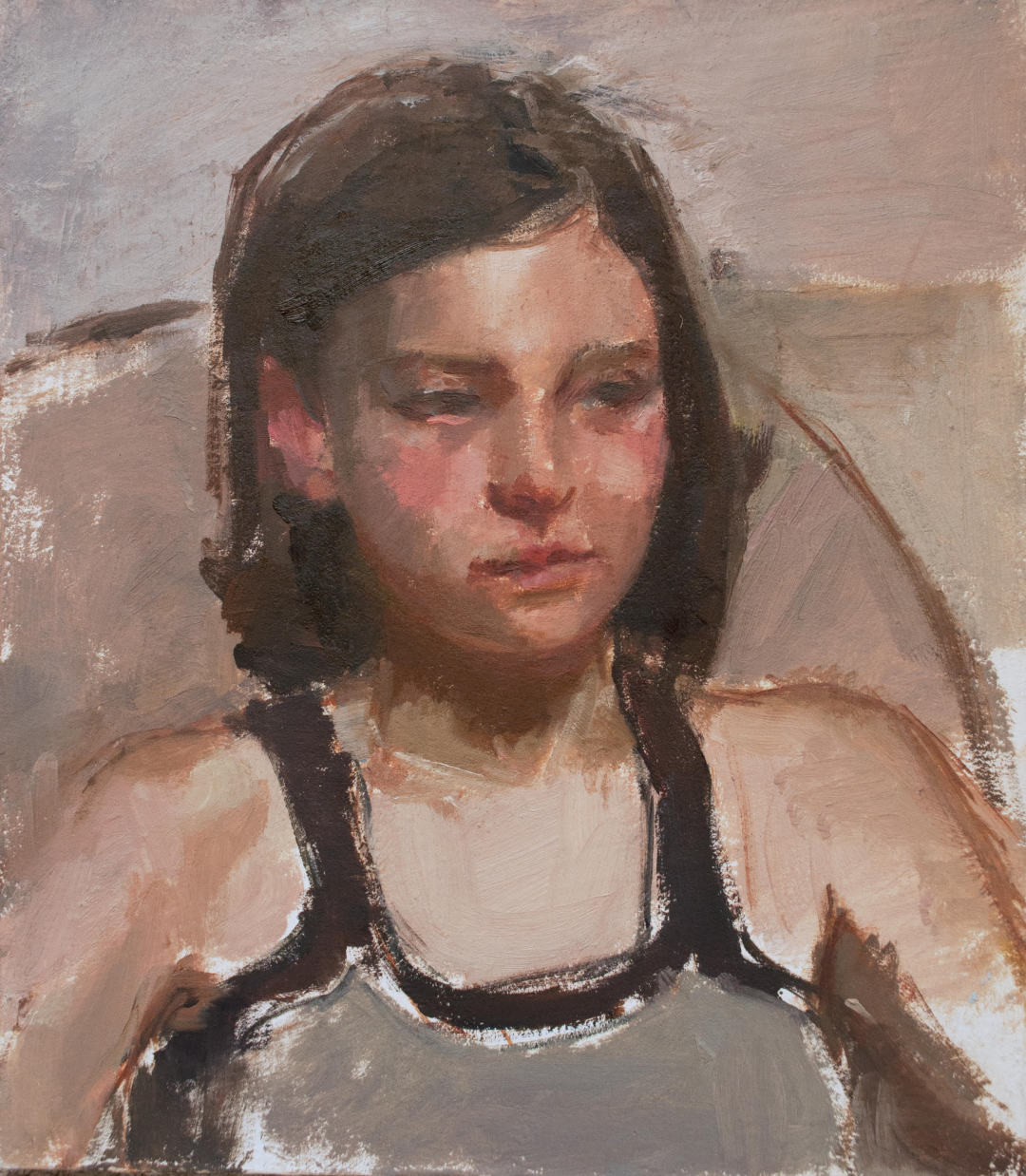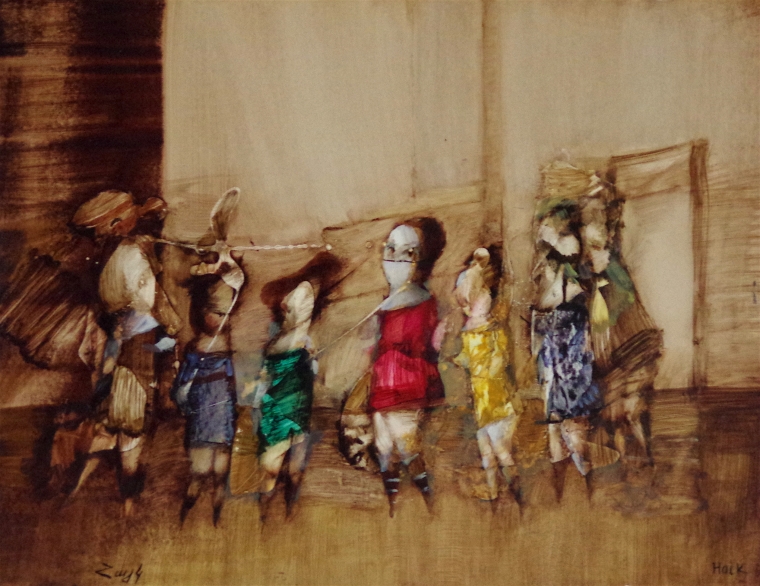The Evolution of Art: A Comprehensive Overview to Figurative Oil Painting
The Evolution of Art: A Comprehensive Overview to Figurative Oil Painting
Blog Article
A Trip Via the World of Figurative Oil Paint: Discovering the One-of-a-kind Features and Emotional Deepness of the Medium

History of Figurative Oil Painting
Emerging throughout the late Center Ages and flourishing throughout the Renaissance, figurative oil paint has an abundant background that mirrors both creative technology and social development. Oil paints were made use of in Europe as a method to improve the brightness and depth of color in art work. Musicians such as Jan van Eyck originated the medium, demonstrating its potential to record detailed information and structures, therefore enabling an extra realistic depiction of the human type.
As the Renaissance proceeded, distinguished numbers like Leonardo da Vinci and Michelangelo broadened the limits of figurative oil painting. They stressed physiological precision and point of view, creating jobs that shared feeling and narrative depth. The medium's versatility permitted for trial and error with light and darkness, resulting in the advancement of chiaroscuro methods that even more enriched the aesthetic experience.
One-of-a-kind Attributes of the Tool
The development of metaphorical oil paint has been dramatically influenced by the one-of-a-kind characteristics of the tool itself. Oil paint, made up of pigments suspended in oil, provides musicians an exceptional flexibility that permits a vast array of structures and coatings. Its slow drying out time makes it possible for precise mixing and layering, which can create depth and luminance unattainable in other mediums.
In addition, oil paint's rich coloring gives dynamic shades that keep their intensity gradually. This particular is important in metaphorical paint, where capturing the subtleties of complexion and psychological expressions is paramount. The capability to attain soft changes and refined gradients improves the realistic top quality of subjects, enabling artists to share intricate emotions.
Furthermore, oil paint adheres well to different surface areas, such as canvas, steel, and wood, widening the extent of imaginative expression. The tool's flexibility supports different methods, from comprehensive realism to expressive brushwork, allowing artists to explore their private styles.
Inevitably, the special properties of oil paint not just improve the aesthetic experience however also empower musicians to interact profound narratives, making metaphorical oil paint a deeply evocative art form.
Styles and techniques Used
Within the realm of figurative oil paint, artists employ a varied variety of methods and designs that add to the depth and richness of their work. One popular strategy is glazing, where clear layers of paint are used over dried layers, permitting light to reflect and pass through, improving luminosity and deepness. This method is often made use of to accomplish a feeling of realism and intricacy in skin tones.
An additional method is impasto, where thick layers of paint are applied with a combination knife or brush, developing a textured surface area that adds a three-dimensional top quality to the painting. This design can evoke a visceral response, drawing the viewer in with its responsive nature.
Artists additionally explore numerous brushwork styles, from penalty, detailed strokes that catch intricate functions to broader, a lot more meaningful strokes that share motion and feeling (figurative oil painting). The choice of color scheme considerably affects the total mood of an item, with cozy tones frequently presenting feelings of comfort and trendy tones suggesting sorrowful
In addition, the integration of chiaroscuro, the contrast in between light and darkness, permits artists to produce remarkable results that boost the narrative quality of their work. Each method and design is carefully chosen to raise the customer's experience and understanding.
Psychological Depth in Figurative Art
Emotional depth offers as a keystone in metaphorical art, allowing artists to transcend simple depiction and involve customers on an extensive level. This emotional resonance is typically accomplished via the nuanced representation of human numbers, expressions, and communications. Artists harness the power of shadow, color, and light to evoke sensations that reverberate deeply with the target market, developing a natural link to the subject issue.
In metaphorical oil painting, the elaborate layering of paint can mirror the intricacies of human feeling. The option of combination, whether warm or amazing, plays a crucial duty in setting the mood and ambience of a piece. Softer colors may evoke tranquility and introspection, while vibrant, look at this web-site different colors can click this site interact tension and dramatization.

Influential Artists and Their Functions
Various influential artists have actually considerably formed the landscape of figurative oil paint, each adding unique viewpoints and methods that remain to influence modern designers. Among these musicians, Lucian Freud sticks out for his intense psychological deepness and raw representation of the human type, typically blurring the lines between beauty and decay. Freud's works, defined by thick, impasto brushstrokes, invite audiences to confront the intricacies of identification and vulnerability.

Likewise, Andrew Wyeth's precise realism in items like "Christina's World" catches extensive stories within relatively straightforward compositions. His use light and shadow evokes a feeling of fond memories and psychological resonance, attracting viewers right into the intimate globes he portrays.
In the realm of modern art, Kehinde Wiley has obtained acknowledgment for his vibrant, epic pictures that challenge traditional ideas of depiction. By placing people of shade in contexts evocative timeless portraiture, Wiley's work redefines the canon of art history.
These musicians, alongside others, have not only enriched metaphorical oil painting but have actually my review here likewise expanded the discussion surrounding society, emotion, and identification, guaranteeing that the medium stays an important kind of expression in the art world. figurative oil painting.
Conclusion
Finally, figurative oil paint remains an effective medium that encapsulates the intricacies of human emotion via its abundant pigmentation and versatile strategies. The historical development of this art form, integrated with its unique qualities, enables profound imaginative expression. Techniques such as glazing and impasto improve the psychological resonance of each item, while the payments of influential musicians remain to motivate and shape the discussion surrounding this classic category. The journey with metaphorical oil painting reveals its lasting significance in the art globe.
The expedition of metaphorical oil paint offers a profound insight into the interplay of method, emotion, and historical context that defines this age-old tool. Oil paint, made up of pigments put on hold in oil, uses musicians a remarkable flexibility that enables for a large array of appearances and coatings.Within the world of metaphorical oil paint, musicians use a varied variety of methods and designs that contribute to the depth and richness of their work.Numerous influential musicians have actually dramatically formed the landscape of metaphorical oil paint, each contributing distinct perspectives and techniques that continue to motivate modern designers.In final thought, figurative oil painting continues to be an effective medium that encapsulates the complexities of human feeling with its rich pigmentation and versatile techniques.
Report this page